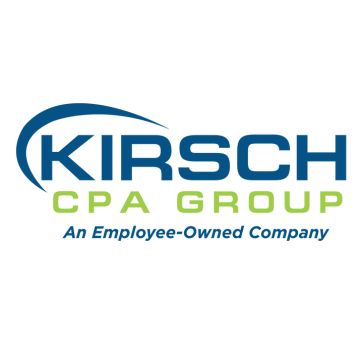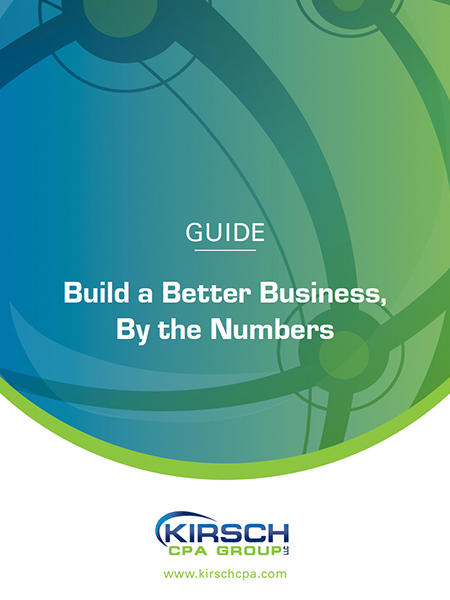What Are the Most Common Form 990 Mistakes Not-for-Profits Make?
Kirsch CPA Group
Feb 16, 2023

Each year, your non-for-profit organization must carefully determine the proper Form 990 return to file because penalties can be assessed for failing to file the right version. If a form is materially incomplete or the wrong return is filed, the IRS will return Form 990 series forms filed on paper — and reject electronically filed returns. When preparing and reviewing 990 returns, it’s important to check for common filing errors (as reported by the IRS) before submitting them.
Missing or incomplete schedules are the most common errors causing the rejection of a Form 990 return. First, use the appropriate return for the tax period for which you’re filing. Keep in mind that certain organizations are prohibited from filing Form 990-EZ.
You can help avoid common preparation errors by taking the following steps:
Form 990 and 990-EZ
- Check the accuracy of your Employer Identification Number, tax period, and Group Exemption Number (if applicable).
- Indicate the correct IRC subsection for the organization as indicated in the determination letter.
- Fully complete all parts of the core form.
- Complete all parts of Schedule A for Section 501(c)(3) or 4797(a)(1) organizations (and for 990-EZ filers, Part VI).
- Complete Schedule B (Schedule of Contributions), or certify it isn’t required.
- Complete Schedule O (Supplemental Information) to provide narrative information required or supplement responses throughout the form.
- Complete fully and attach all other required lettered schedules determined for Form 990 by completing Part IV (Checklist of Required Schedules). (For Form 990-EZ, complete the trigger questions for Schedules A, B, C, E, G, and L throughout the form.)
- Answer “Yes” or “No” to each relevant question (unless otherwise instructed).
- Include an entry on all total lines, including zero (0) when appropriate.
- Omit any unnecessary personal-identifying information.
- Include the proper signature by an authorized officer of the organization.
990-PF
- Complete all required parts by answering Yes, No, or N/A (not applicable) to each question.
- Complete all of Part II (Balance Sheet) columns A, B, and C if the foundation’s total assets are $5,000 or more at any time during the year. If less than $5,000, all of columns A and B is required, but only line 16 of column C is required.
- Complete Part X (Minimum Investment Return) if the organization is a domestic foundation, foreign foundation claiming status as a private operating foundation, or private operating foundation as described in the tax code.
- Complete Part XV (Supplementary Information) if the foundation had assets of $5,000 or more at any time during the year.
- Complete Schedule B (Schedule of Contributions), or certify it is not required by checking the box in Part I, Line 2.
- Omit personal-identifying information that is unnecessary.
- Include the proper signature by an authorized officer of your organization.
Final Thoughts
It’s important to carefully prepare and review of 990 returns to help avoid errors that can cause a return to be rejected or returned. In addition, you want to avoid incurring costly failure to file penalties ($20 per day or $100 per day for large organizations). Kirsch CPA Group can help ensure your organization stays in compliance.
We can help you tackle business challenges like these – schedule an appointment today.
© Copyright 2023. All rights reserved.
Related Nonprofit Accounting Blogs
- Got a “Business” Idea? You Might Want to Form a Nonprofit
- 6 Common Tax Deductions for Nonprofits
- Encourage Legacy Gifts to Your Nonprofit
- Avoiding Nonprofit Tax Traps
- Don’t Run Afoul of Private Inurement Rules
- Danger! How Nonprofits Often Lose Their Tax-Exempt Status
- Five Ways to Inspire Nonprofit Innovation
- Contending With the Patchwork of State Requirements for Nonprofits
- When Should Not-for-Profit Organizations Return Donations?
- Beat Them or Join Them-A Challenge for a Not-for-Profit
More Resources

About The Author
Kirsch CPA Group is a full service CPA and business advisory firm helping businesses and organizations with accounting,…
Sign Up for Email Updates
Tags
Accounting & Financial News

3 Critical Questions to Ask When Acquiring Construction Equipment
Acquiring equipment is a major strategic decision for small to midsize construction businesses. It affects everything from…

Traveling for Business with Your Spouse
If you're a business owner, you may have upcoming business trips on your agenda. The idea of…



